This post may contain affiliate links. By clicking and making a purchase through the links, I earn a small commission at no extra cost to you. See my disclaimer for more information. This allows me to keep the site up to date and expand on resources.
Wondering where to see wildlife in Puerto Vallarta? Let me help you! I live in Puerto Vallarta, and I LOVE wildlife, so I know all the best wildlife experiences the city has to offer.
Puerto Vallarta may be a city, but it’s also a place where you can experience the rich nature and biodiversity that Mexico has to offer.
The city is uniquely positioned where rivers, tropical jungles, oceans, and mountains meet.
These rich ecosystems provide a habitat for many incredible wild animals in Puerto Vallarta. The Bay of Banderas alone is home to more than 600 species!
Whether you’re searching for humpback whales off the coast or bird-watching in the tropical jungle, these nine encounters with Puerto Vallarta wildlife will make your trip unforgettable.
Questions about Puerto Vallarta? Join my free PV Facebook group and connect with like-minded travellers!
Where to see wildlife in Puerto Vallarta
#1. Swim with dolphins in the wild
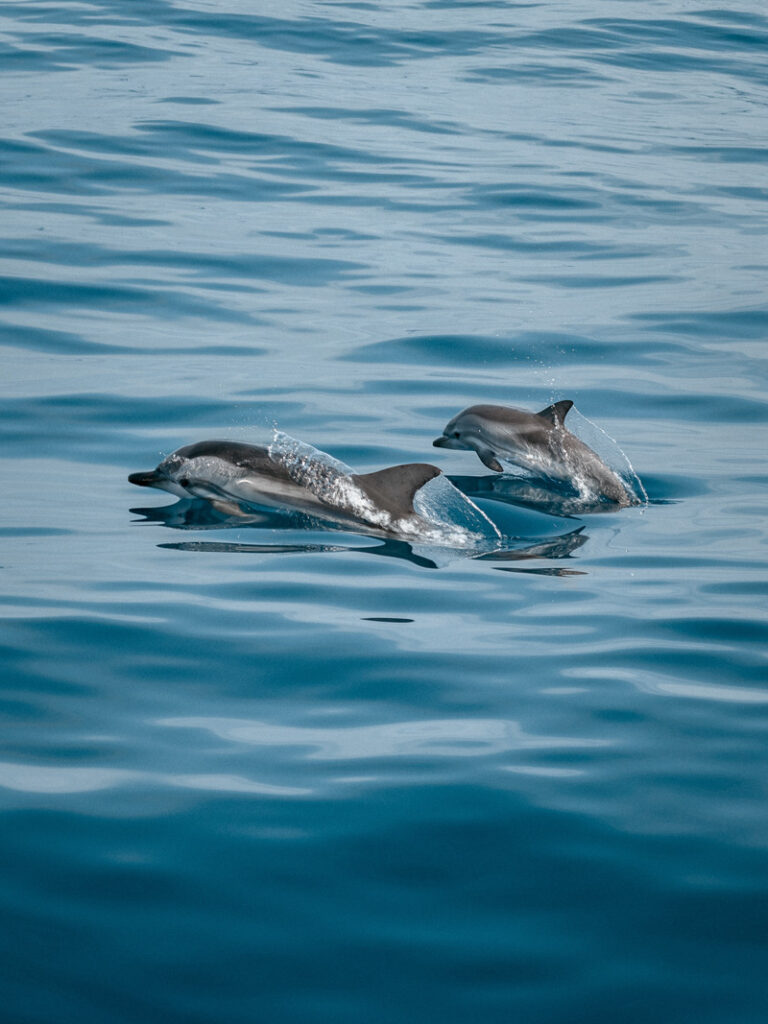
In the city, you will see many tour operators offering swimming experiences with captive dolphins, but you should avoid this as the dolphins are taken from the wild and often kept in stressful, poor conditions.
The best way to encounter dolphins in Puerto Vallarta is to see them in the wild, either from the beach or on a boat tour with an ethical operator that respects the animal’s space.
This highly-rated tour with wildlife connections takes you to see dolphins and whales while participating in a research project that helps their conservation.
Types of dolphins you can see include bottlenose dolphins, spotted dolphins, spinner dolphins, rough-toothed dolphins, and orcas if you’re lucky.
If you’re interested in getting closer, wildlife connections run another tour where you can swim with free WILD dolphins.
Of course, it all depends on the animals, and the researchers will make the final call if it’s safe to go swimming with them, but they also offer a money-back guarantee if you don’t find them.
🤩 I love this tour because you get to swim with dolphins in their natural habitat
#2. Whale watching
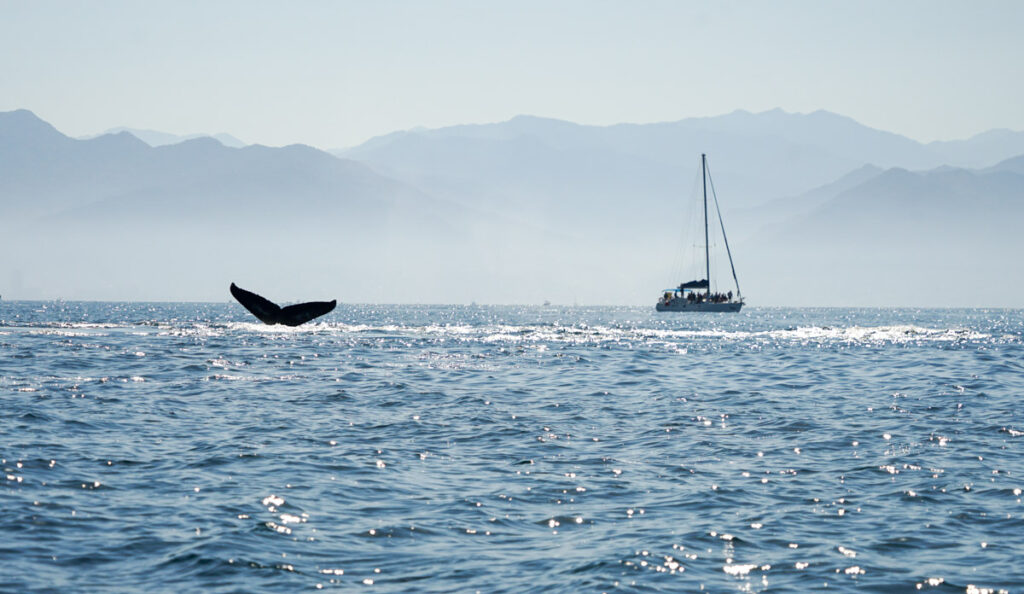
If you are visiting from December to March, don’t miss the chance to see humpback whales in Puerto Vallarta.
Every winter, thousands of humpback whales migrate from the north to breed and nurture their offspring. The sheltered waters in the Bay of Banderas offer the perfect conditions for the whales,
Usually, the Puerto Vallarta whale watching season begins in December and ends in late March, which coincides with the high season in Puerto Vallarta, making it one of the best times to visit.
It’s not uncommon to see whales from shore, but for a closer look, you can join a whale-watching boat tour to see them up close. This is one of the top Jalisco wildlife encounters!
Humpback whales are the most common type, but sometimes you can other whale species, such as brides, minke whales, and orcas.
🤩 I love this tour because you get to participate in marine conservation
#3. Bird-watching in the botanical gardens
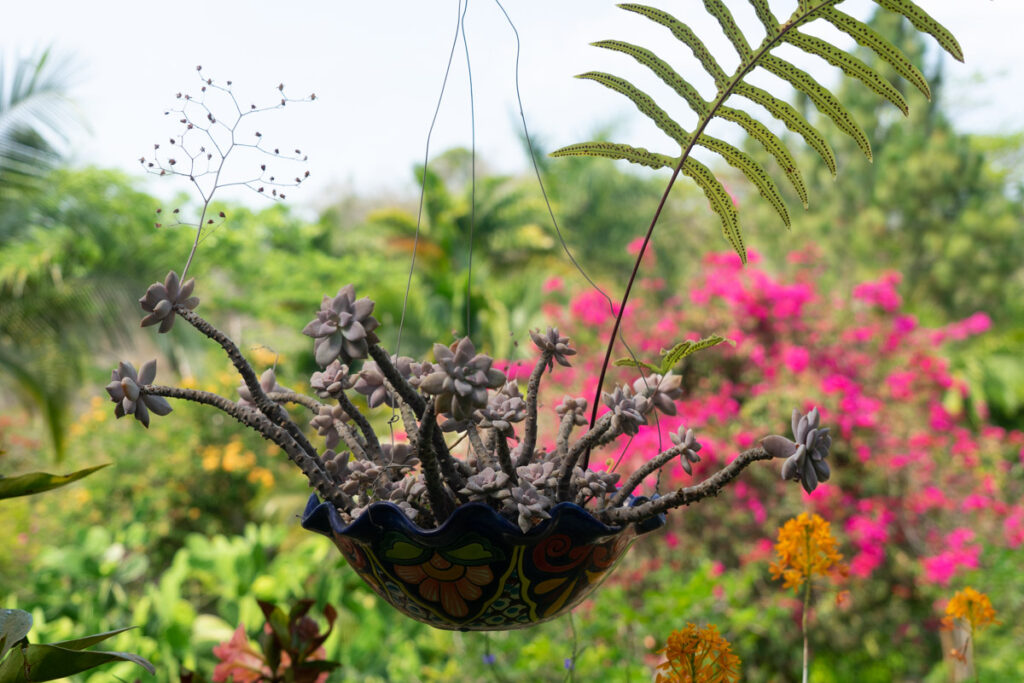
If you want to go bird watching in Puerto Vallarta, you’ll definitely want to add the Puerto Vallarta botanical gardens to your list of things to do.
It’s just a 30-minute drive from downtown, and there are public buses from Zona Romantica, making it one of the best places for a nature hike near the city.
The Puerto Vallarta botanical gardens are dedicated to the reforestation, conservation, and study of exotic plants from Mexico and the world, with over 46 acres of gardens to explore. They are also an excellent place to go bird-watching.
The gardens provide habitat for San Blas jays, yellow-winged caciques, woodpeckers, various species of hummingbirds, and many other species of tropical birds.
#4. Snorkeling in Los Arcos Marine Park
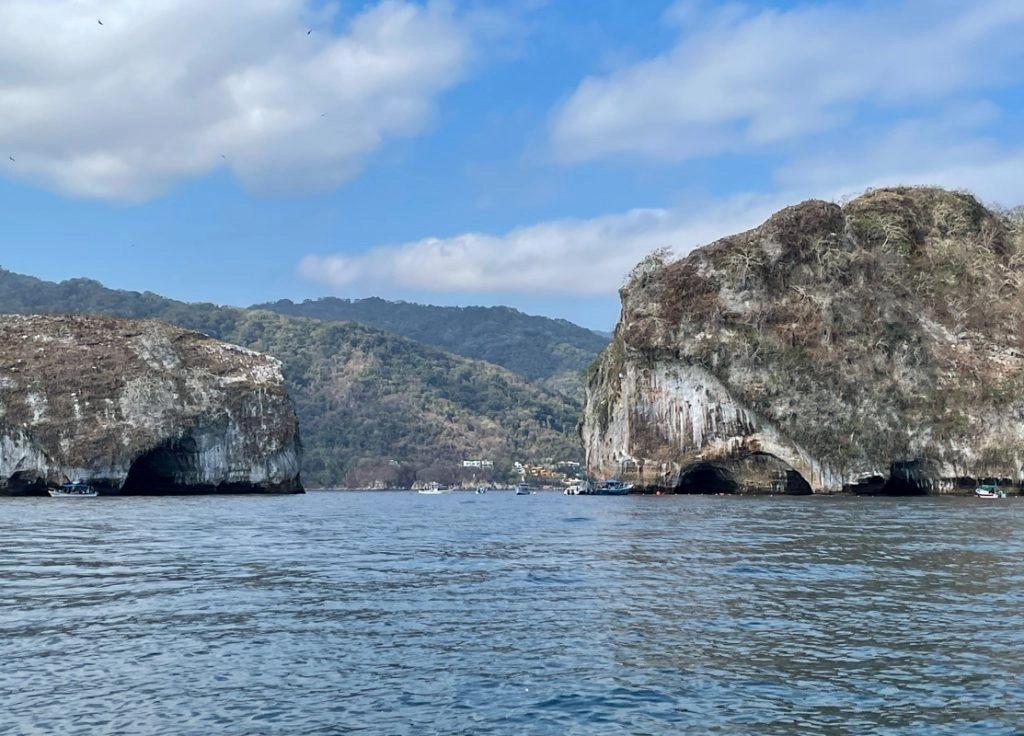
Los Arcos Marine Park is a protected area in Puerto Vallarta that provides a habitat for marine birds and animals. Although it can be seen from the highway, the best way to experience it is to join a snorkeling or diving tour and get in the water.
As you approach the unique rock formation, you’ll see hundreds of birds flying overhead the turquoise water.
This area is also a habitat for many marine birds, including blue-footed boobies, parrots, and pelicans.
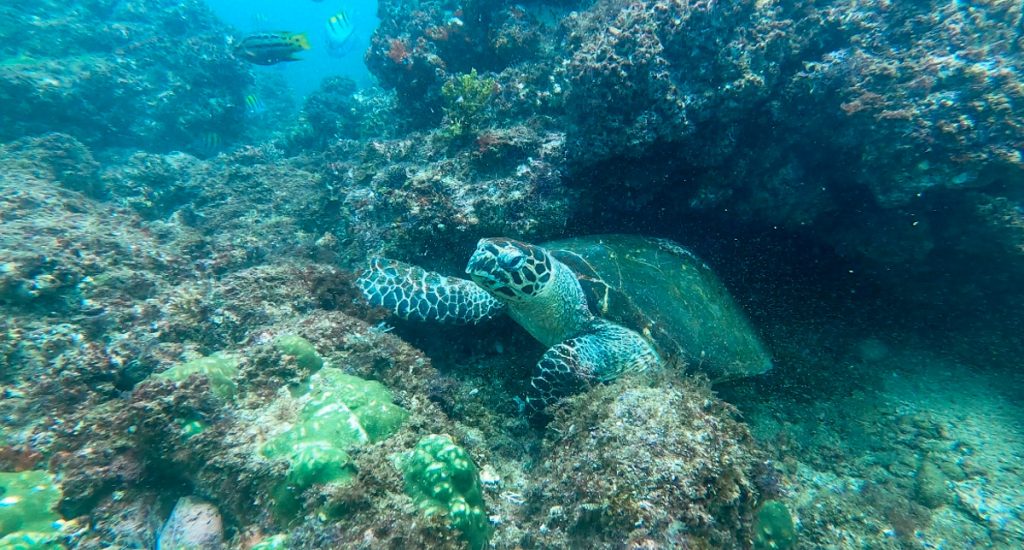
Underneath the water, you can see various marine animals, including manta rays, sea turtles, clownfish, pufferfish, stingrays, octopuses, and more. It’s one of the best places for snorkeling tours in Puerto Vallarta!
BOOK A SNORKELING TOUR TO LOS ARCOS BELOW
#5. Baby sea turtle release
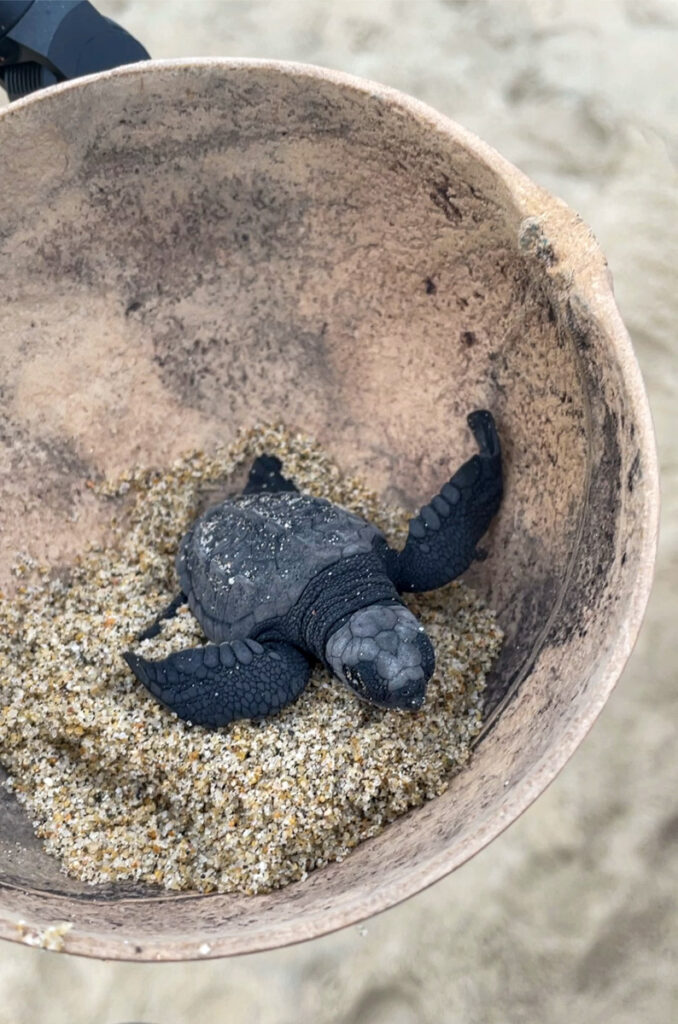
Mexico is home to some of the most important sea turtle nesting sights in the world, and one of the most remarkable wildlife experiences in Puerto Vallarta is taking part in a baby sea turtle release.
Every year, Olive Ridley sea turtles return to the shores of the Bay of Banderas to deposit their eggs. The turtle hatching season is typically July to October, although they can happen at other times of the year. I went during February in Puerto Vallarta.
There are several turtle release camps around Puerto Vallarta, where nests are looked after until the eggs hatch to protect them from predators.
The turtle release camps sometimes organize events for the public, where you can join the volunteers to witness how the baby turtles find their way into the ocean for the first time. It’s an amazing sight to see!
The closest camp to Puerto Vallarta is Boca de Tomates, behind the airport. Follow their Facebook page, where they announce upcoming turtle release events.
#6. Look for crocodiles
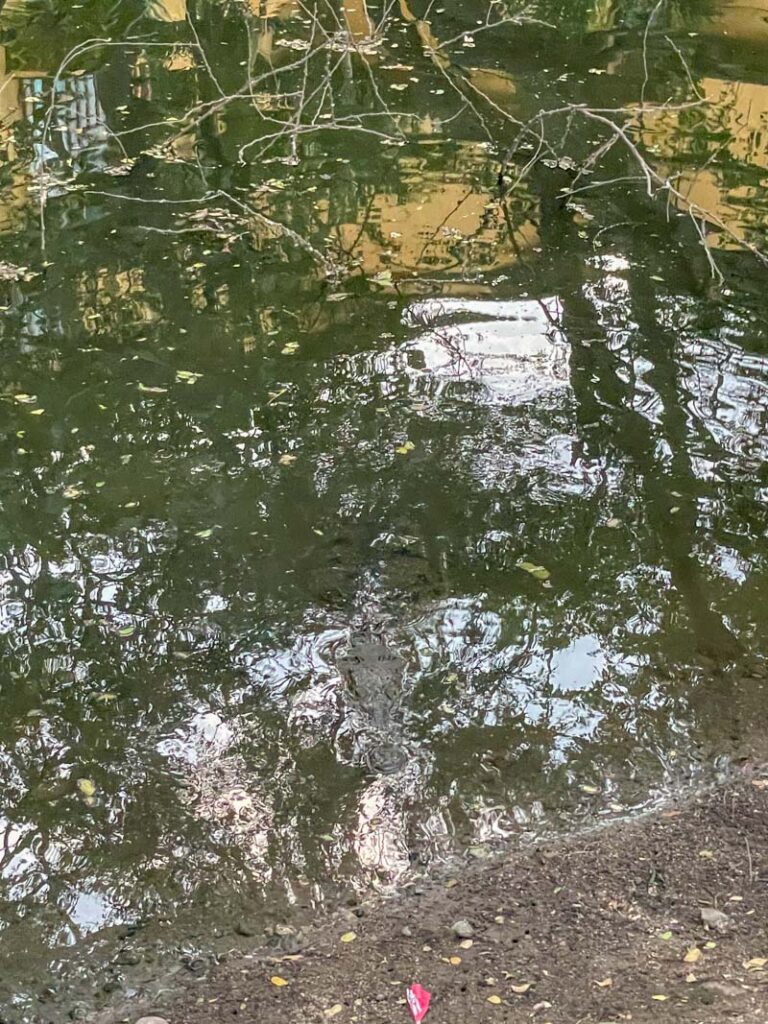
Right in the heart of the city’s hotel zone is El Salado Estuary, the only urban estuary in Mexico. It comprises over 169 hectares of wetlands and mangroves with over 100 species of birds and 29 species of amphibians and reptiles.
Tours are given through the channels on a small boat alongside a biologist. You may spot crocodiles, iguanas, crabs, colorful birds, and more.
The sanctuary is temporarily closed at the time of writing.
However, you don’t have to go to a nature preserve to see crocodiles in Puerto Vallarta. There’s one that hangs out in the pier in Marina Vallarta. Just walk along the pier and look for him; you can usually find tourists taking photos.
I’ve also seen crocodiles in the water on paths leading down to the beach in Las Glorias.
#7. Visit the Butterfly Sanctuary
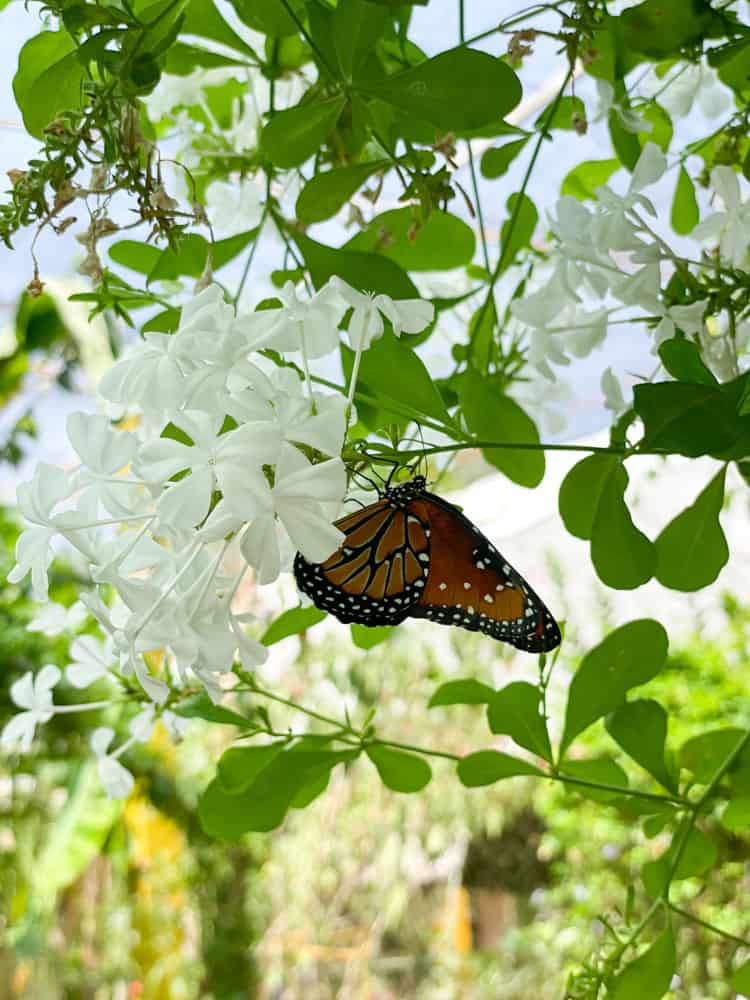
Delight in a magical experience at the butterfly sanctuary in Puerto Vallarta.
Located just outside of town, the Jardin Magico provides a haven for countless butterfly species, including the famous monarch butterfly.
The project was started in 2019 with the mission to educate, recover threatened pollinators, increase the numbers of widespread species, and inspire people to understand them.
Educators at the sanctuary provide valuable insights into the butterflies’ life cycle, behavior, and the importance of preserving their habitats.
After viewing butterflies in various life changes, you’ll get the chance to release newborn butterflies and see them fly for the first time. It’s pretty magical!
#8. Go bird watching in the Marietas Islands

Take a boat tour to the Marietas Islands, home to an array of marine birds, such as blue-footed boobies and magnificent frigatebirds.
Birdwatching at the Marietas Islands in Puerto Vallarta offers a bird lover’s paradise.
These small, uninhabited islands located in Banderas Bay are designated as a National Park and Biosphere Reserve, making them a haven for diverse bird species.
The combination of unique rock formations, secluded beaches, and rich marine life creates an ideal environment for various avian species to thrive.
The blue-footed booby is one of the most iconic and sought-after birds on the islands.
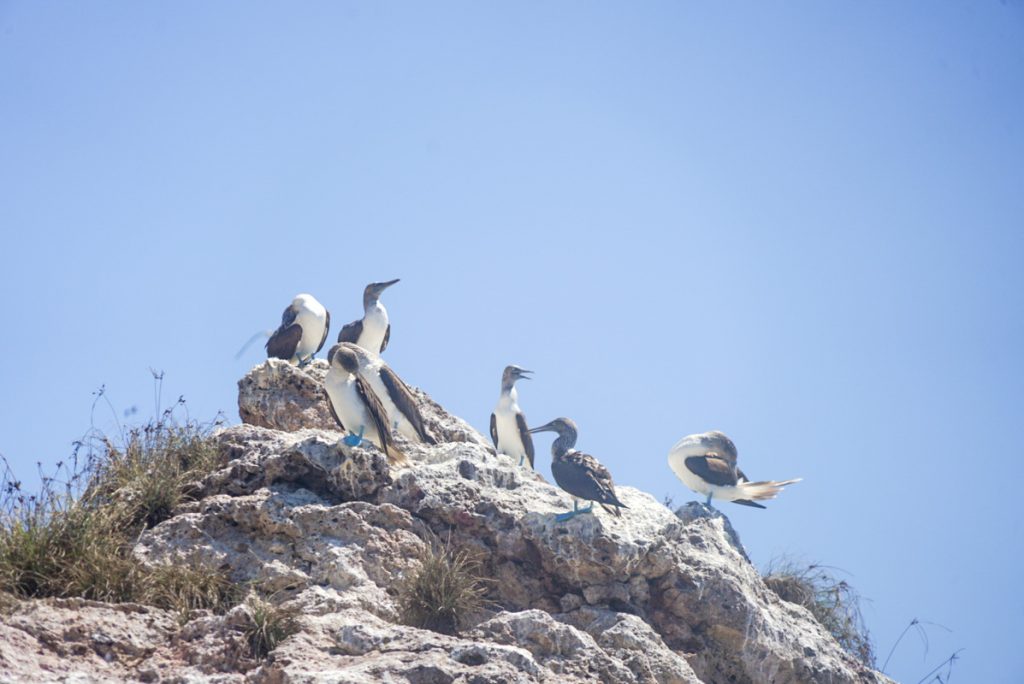
Renowned for their distinctive bright blue feet, these seabirds are known for their elaborate courtship displays, which involve intricate dances showing off their blue feet to attract mates.
#9. Go hiking in the jungle
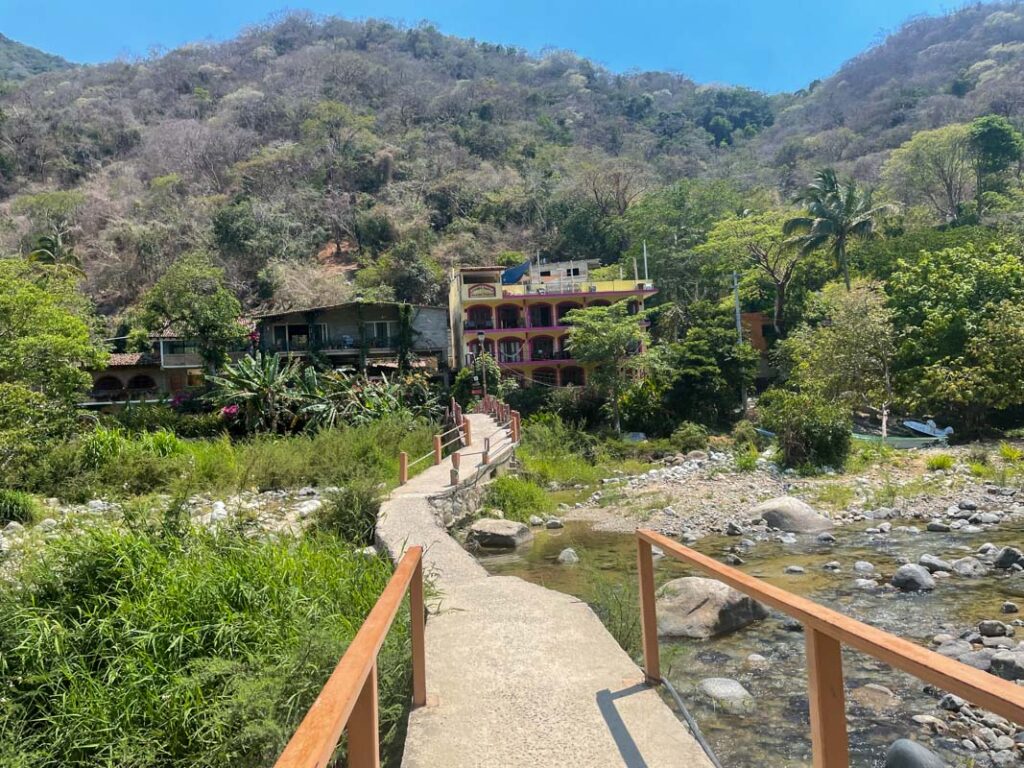
Go hiking or horseback riding in the Sierra Madre Mountains, where you can encounter various Puerto Vallarta jungle animals, including iguanas, agoutis, coatis, and a variety of tropical birds.
You’ll encounter a diverse array of wildlife, from vibrant iguanas basking in the sun to adorable agoutis scurrying amidst the foliage and coatis with their distinctive ringed tails.
Amidst breathtaking scenery, hiking in the jungle offers birdwatching opportunities, where you can spot colorful parrots, toucans, and hummingbirds flitting through the canopy.
Hiking is a great way to disconnect from daily life and immerse yourself in the beauty and serenity of nature.
What animals are in Puerto Vallarta?
Puerto Vallarta is home to a rich diversity of wildlife, both on land and in the surrounding waters. The region’s varied ecosystems, which include jungles, mountains, beaches, and marine environments, support a wide range of species.
Here are some of the fascinating Puerto Vallarta animals you can find:
- Humpback Whales: Banderas Bay, off the coast of Puerto Vallarta, is a popular wintering ground for humpback whales. These majestic marine mammals migrate from colder northern waters to breed and give birth in the warm, protected waters of the bay from December to March.
- Sea Turtles: Various sea turtle species, such as Olive Ridley, Leatherback, Hawksbill, and Green turtles, nest and hatch along the shores of Puerto Vallarta. Several conservation efforts are in place to protect these endangered creatures and ensure their survival.
- Dolphins: Bottlenose dolphins and other dolphin species are commonly seen in Banderas Bay, often delighting visitors with their playful behavior and acrobatics.
- Marine Birds: The Marietas Islands, a nearby protected archipelago, attract a diverse array of marine birds, including Blue-footed Boobies, Magnificent Frigatebirds, Red-billed Tropicbirds, and Heermann’s Gulls, among others.
- Crocodiles: In some estuaries and lagoons around Puerto Vallarta, American crocodiles can be found basking in the sun or swimming in the waters.
- Iguanas: These iconic reptiles are abundant in the region. You can often spot them sunbathing on rocks, in trees, or even around urban areas.
- Spider Monkeys: In the lush jungles of the Sierra Madre Mountains, you might have a chance to encounter the charismatic and endangered spider monkeys swinging through the trees.
- Birds of Puerto Vallarta: The jungles and forests surrounding Puerto Vallarta are home to a diverse array of bird species, including parrots, toucans, hummingbirds, trogons, and many others, making it a prime spot for birdwatching.
- Butterflies: During the monarch butterfly migration season (late October to early March), thousands of monarch butterflies cover the forests of Mexico in a breathtaking natural spectacle.
- Snakes and Reptiles: While not always easily seen, Puerto Vallarta is home to various snake and reptile species, including boa constrictors, rattlesnakes, and various lizards.
- Fish and Marine Life: The waters around Puerto Vallarta are teeming with marine life, including various colorful fish, rays, eels, and whale sharks during their migration season.
These are just some examples of the abundant wildlife and animal Puerto Vallarta. The region’s commitment to conservation and responsible tourism ensures that visitors can enjoy these natural wonders while also preserving them for future generations.
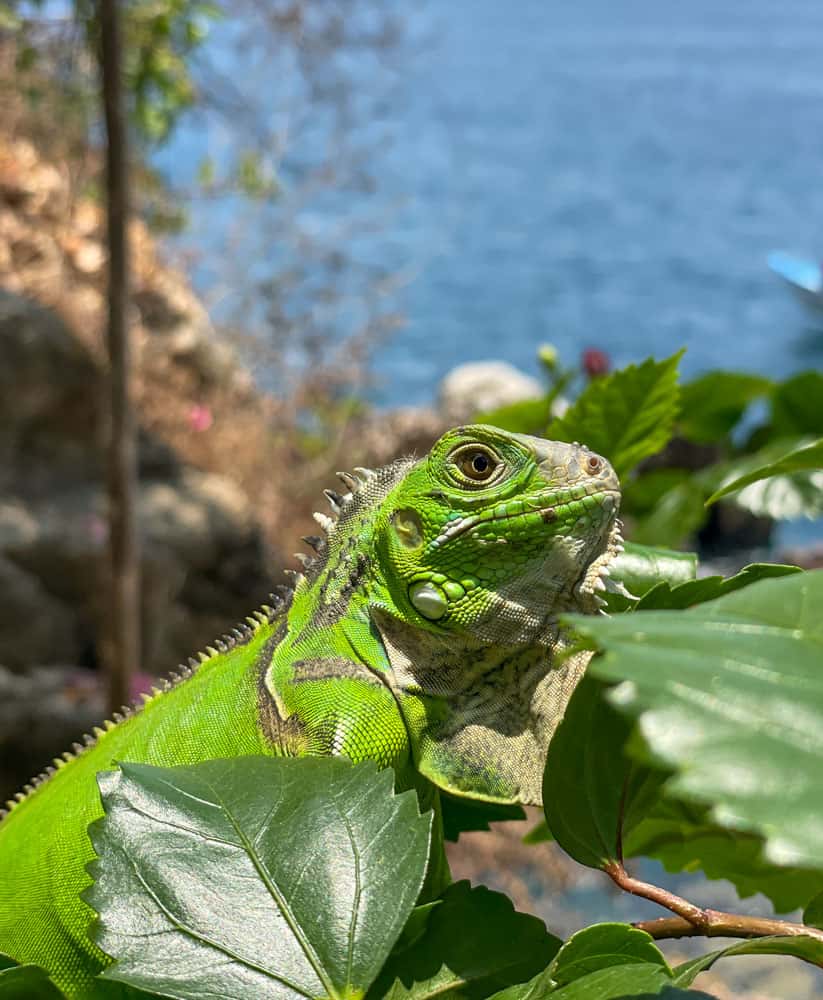
FAQs About Puerto Vallarta Wildlife
What wild animals are there in Puerto Vallarta?
Puerto Vallarta is home to various wild animals, including iguanas, agoutis, coatis, tropical birds, and marine life such as sea turtles, dolphins, and humpback whales.
What predators are in Puerto Vallarta?
There are no large predators in Puerto Vallarta. The region’s wildlife primarily consists of small to medium-sized animals and marine creatures.
Are there monkeys in Puerto Vallarta?
Yes, there are monkeys in Puerto Vallarta. The region is home to the charismatic and endangered spider monkeys, which can be spotted in the jungle areas.
What animal is Puerto Vallarta known for?
Puerto Vallarta is known for its diverse marine life, particularly humpback whales during their migration season.
Are there jaguars in Puerto Vallarta?
While jaguars are native to Mexico, they are not commonly found in the Puerto Vallarta area.
Need more help planning your trip to Puerto Vallarta? Get a custom-made itinerary or book a consultation call with me here.
Are there big cats in Puerto Vallarta?
There are no native big cats like lions or tigers in Puerto Vallarta. The region’s wild cats mainly include smaller species such as ocelots and margays, but they are rarely seen.
Are there venomous snakes in Puerto Vallarta?
There are some venomous snakes in Puerto Vallarta, such as the rattlesnake, but encounters with them are rare as they generally avoid human-populated areas.
What animal in Puerto Vallarta is like a racoon?
The coati is an animal in Puerto Vallarta that is often likened to a raccoon due to its appearance and behavior.
Are scorpions common in Puerto Vallarta?
Scorpions are present in Puerto Vallarta, but they are not commonly encountered by visitors as they prefer to avoid human interaction.
Are there jellyfish in Puerto Vallarta?
Yes, jellyfish can be found in the waters off Puerto Vallarta. I’ve seen them around Los Arcos, but they are not poisonous.
🤩 Looking for the best wildlife experience in Puerto Vallarta? My top choice is
Need more help planning your trip to Puerto Vallarta? Get a custom-made itinerary or book a consultation call with me here.
Final thoughts: Puerto Vallarta animals
Puerto Vallarta is a nature lover’s paradise, offering several incredible wildlife encounters that leave visitors awe-inspired and connected to the natural world.
From humpback whales gracing the bay with their majestic presence to sea turtles nesting on the sandy shores, the region’s diverse marine life and lush jungles provide a harmonious habitat for a wide array of species.
Whether hiking through the Sierra Madre Mountains to encounter playful monkeys or snorkeling with colorful fish in the marine parks, every adventure in Puerto Vallarta will leave you with an appreciation for the beauty and fragility of our planet’s ecosystems.
Planning a trip to Puerto Vallarta? Don’t miss these other fun things to do!
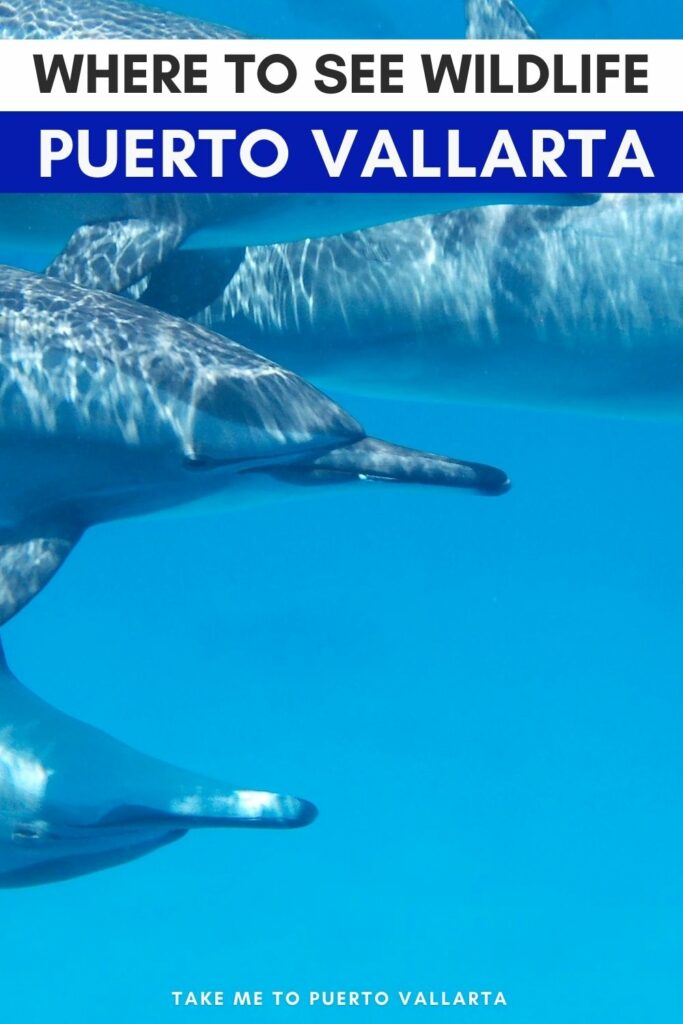
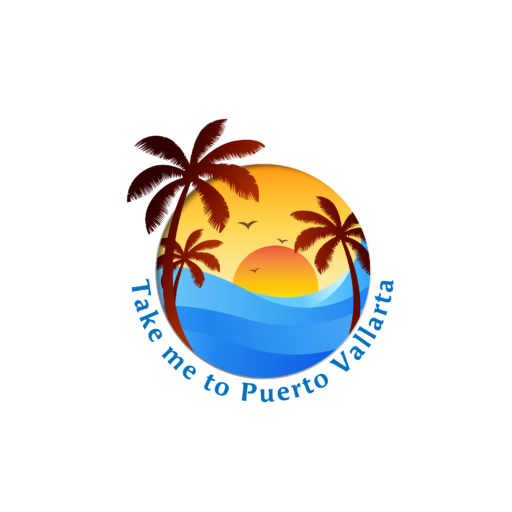
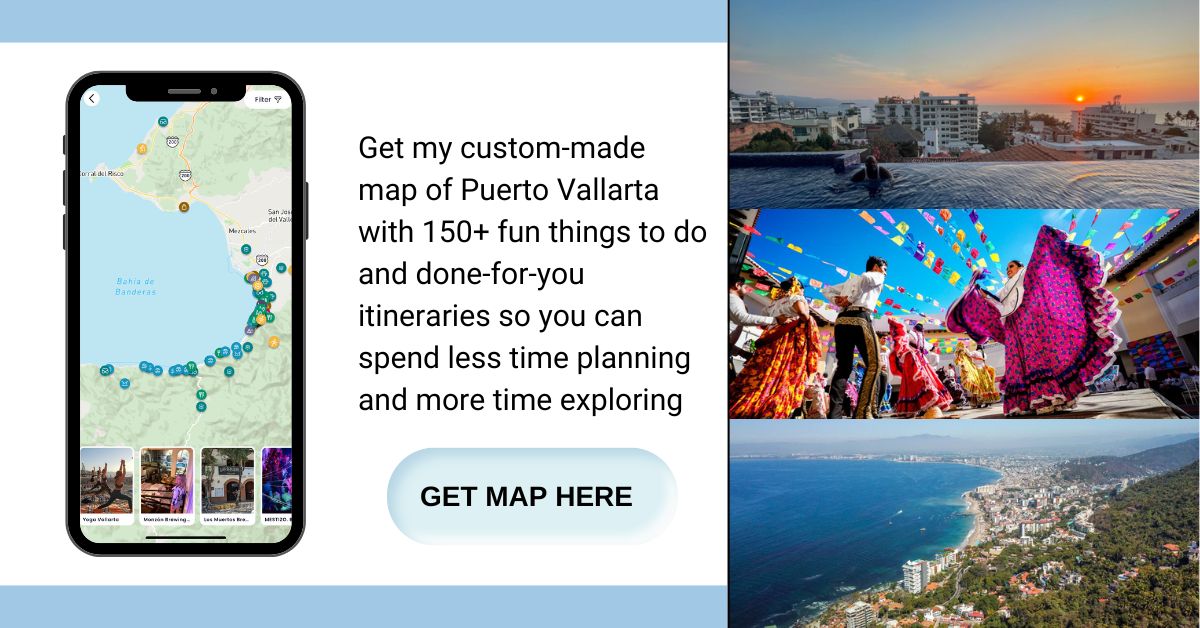

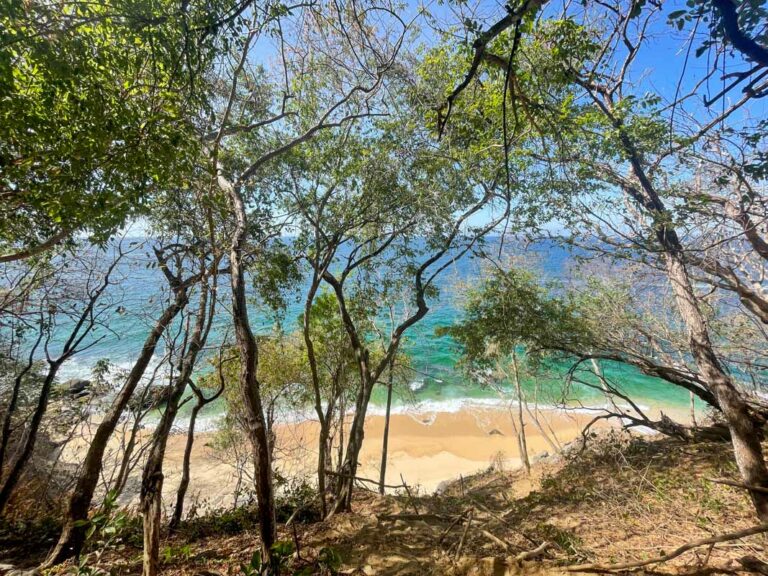
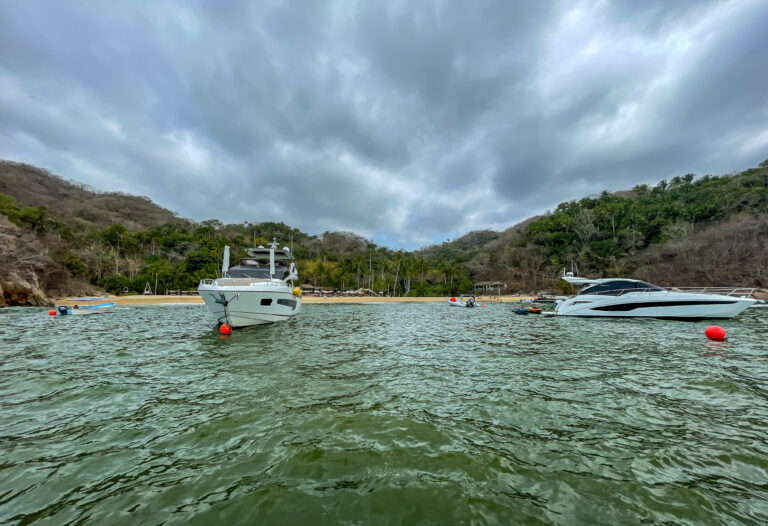
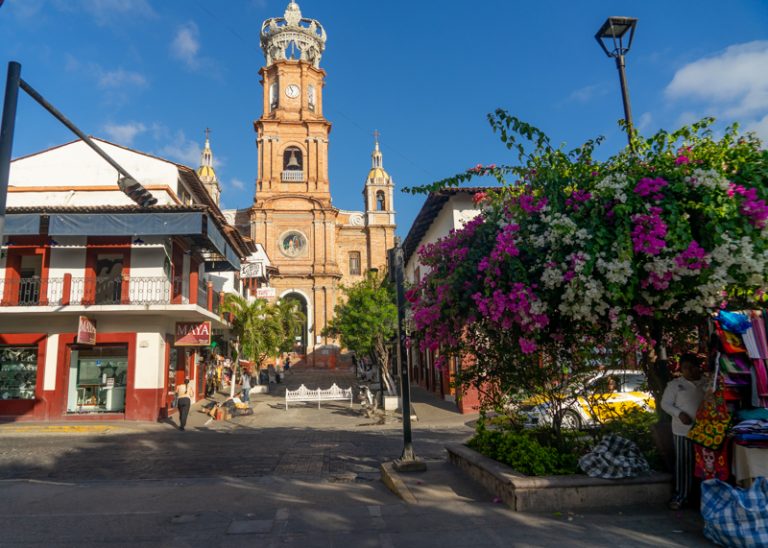

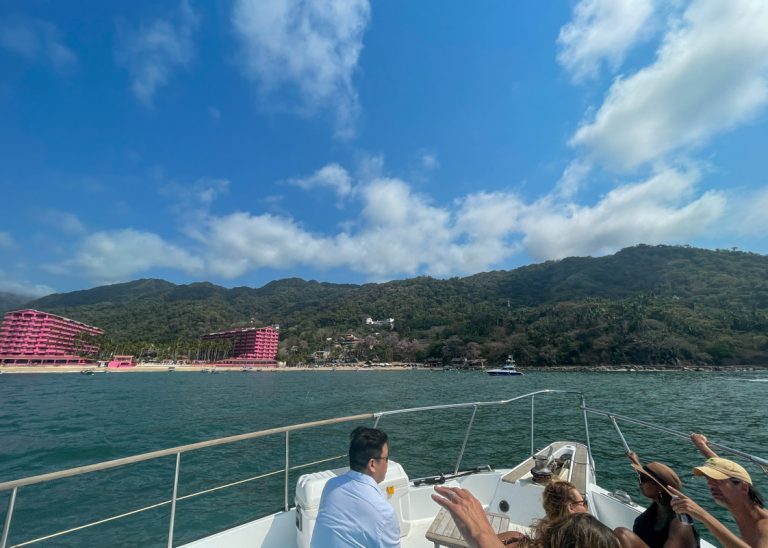
Leave a comment